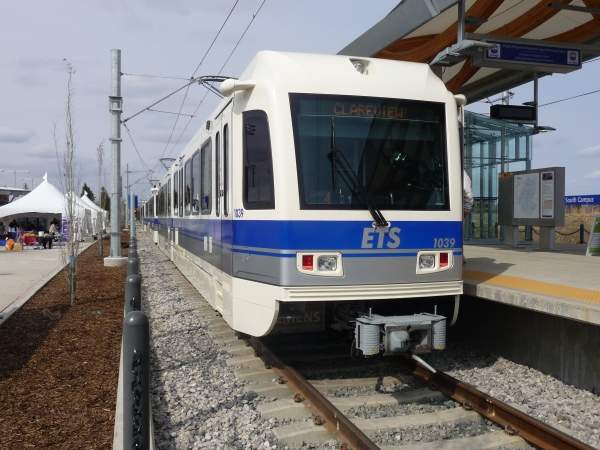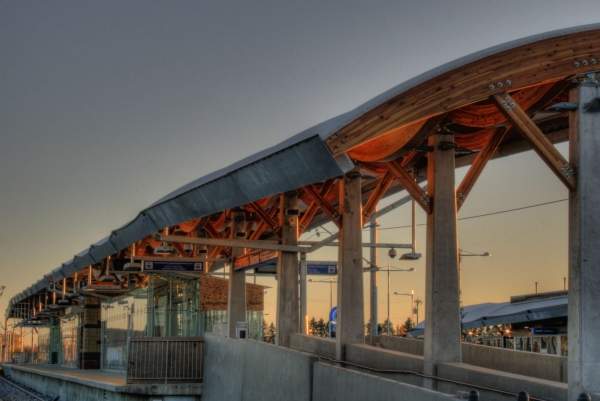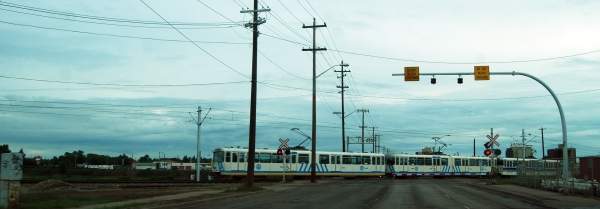Edmonton Light Rail Transit (LRT) system was originally developed as a pilot light rail transit network in Edmonton in Alberta, Canada. Also known as Route 201, the system is currently operating with a single line. It is operated by Edmonton Transit System (ETS), Canada.
The LRT is a 20.5km stretch beginning at Clareview station and ending at Century Park station. It currently has 15 stations with five more stations planned to be built in the future. The LRT system is undergoing expansion and the first extension line (North LRT expansion) on the network is scheduled for opening by the end of 2014.
Line routes on Edmonton’s light rail transit system
The Edmonton Light Rail Transit connects Clareview to Century Park, via Belvedere, Coliseum, Stadium, Churchill, Central, Bay or Enterprise Square, Corona, Grandin or Government Centre, Dudley B. Menzies Bridge, University, Health Sciences or Jubilee, McKernan or Belgravia, South Campus and Southgate stations.
The Churchill, Central, Bay or Enterprise Square, Corona, Grandin or Government Centre and University stations are underground stations, while all the other stations are above ground.
Original need for the LRT system and construction timeline
The construction of Edmonton LRT began in 1974. The first line connecting Belvedere to Central station was opened in April 1978, just in time for the 1978 Commonwealth Games.
The line was extended to Clareview in the North and Corona station in the South in April 1981 and June 1983 respectively.
The D.L. MacDonald Yard, located the between Clareview and Belvedere stations, was built in December 1983 to store, maintain and operate the light rail vehicles (LRVs) operating on the Edmonton LRT system.
The line was further extended to Grandin or Government Centre in the South downtown in September 1989 followed by University (August 1992), Health Sciences (January 2006), South Campus (April 2009) and Century Park (April 2010) stations.
The Clareview and Belvedere stations were refurbished to incorporate a roof and elongated platforms for facilitating the use of five-car trains.
Infrastructure and rolling stock on the Edmonton Transit System (ETS) operated line
The stations along the Edmonton LRT are equipped with automated ticket vending machines and offer full accessibility to senior citizens and disabled passengers. Clareview, Belvedere, Stadium and Century Park LRT stations feature Free Park & Ride facilities.
The Edmonton LRT currently utilises Siemens-Duewag U2 and Siemens SD-160 cars. A total of 37 SD-160 cars were ordered for the LRT between 2005 and 2007. The first SD-160 was delivered in May 2008.
Signalling and communications systems
PNR RailWorks Signalling & Communications was contracted to install new signals and track appliances, renovate the entire system and reconstruct five signal control rooms at a cost of $7.5m.
Thales Canada was contracted by the city of Edmonton in July 2011 to install a SelTrac Communication Based Train Control (CBTC) solution in the LRV. The CBTC significantly meliorates operations and train frequency, integrates computers onboard the train to track and enables communications through radio transmissions.
Edmonton light rail transit network expansion
Five new extension lines have been planned as part of the Edmonton LRT system expansion, including a 2.9km Capaital Line stretching from the Clareview station to the proposed new LRT Station at Gorman located north of 153 Avenue; a new Capital Line extending the South LRT by 3km from Century Park to the south city limit at Heritage Valley; a 3.3km Metro Line extending the North LRT from Churchill LRT Station in downtown Edmonton northwest to Northern Alberta Institute of Technology (NAIT); a Metro line (Northwest LRT) connecting NAIT northwest with the northwest city limits of Edmonton; and the 27km Valley line running from Mill Woods in the southeast to Lewis Farms in the west via Edmonton downtown.
Preliminary engineering for the Clareview-Gorman Capital Line was completed in 2010, while the design and construction will be taken up based on the availability of finance.
Similarly, the preliminary engineering for the South LRT-Heritage Valley Capital Line was completed in 2010. The construction of Metro Line from North LRT to NAIT is, however, complete and its opening expected by the end of 2014. Approval for the Concept of the Northwest LRT was received in May 2013.
Funding commitment for the southeast portion of Valley Line LRT Project, a 13km long low-floor urban line from Mill Woods to downtown Edmonton, was announced by the provincial government in March 2014. Construction is expected to start in 2016 and the opening of this line is expected by the end of 2020.
Contractors involved with the Edmonton LRT expansion
The North Link Partnership comprised of SNC-Lavalin and Graham Infrastructure was awarded a $300m construction management contract for the North LRT expansion project in October 2011.
Thales was awarded the signaling contract for the North LRT expansion in July 2011. AECOM was awarded a $35.5m contract by the city of Edmonton in September 2011 to render preliminary engineering design services for the Southeast and West LRT expansions. The service was expected to begin in 2014. AECOM also provided design, project management and engineering services for the North LRT expansion project.
Stantec has been hired as the managing consultant for the South LRT extension project.






